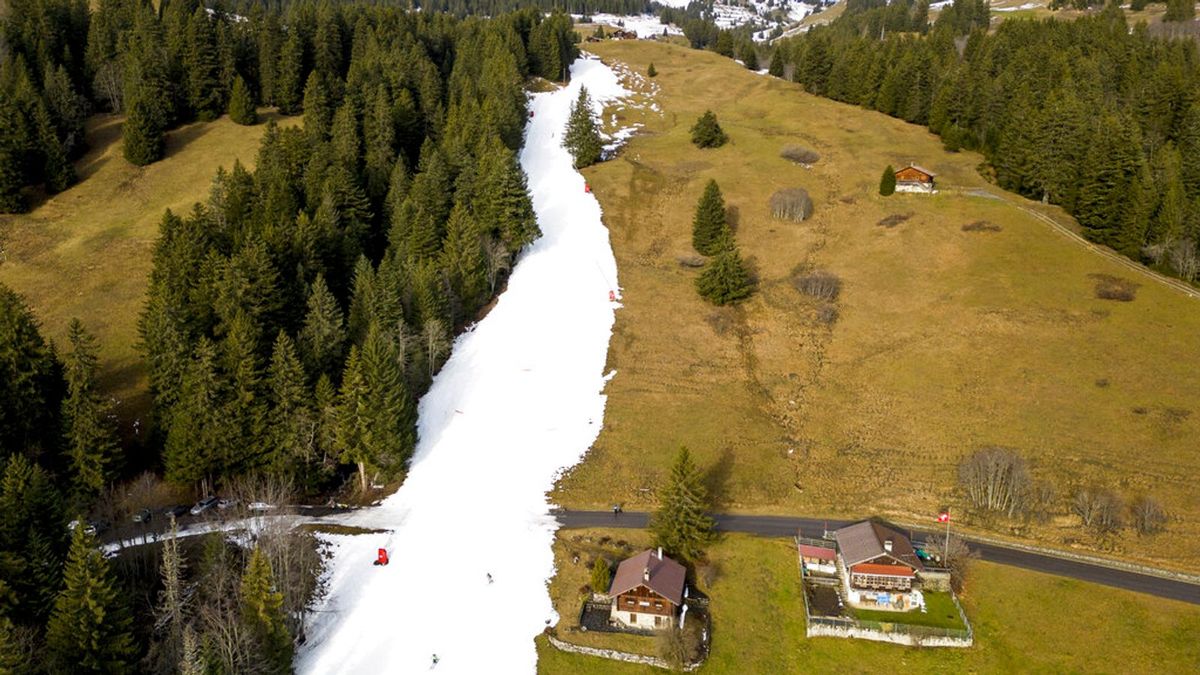How a European snow shortage is affecting the Alps
As climate change continues to snowball, these types of weather events are expected to keep happening.

A few minutes every morning is all you need.
Stay up to date on the world's Headlines and Human Stories. It's fun, it's factual, it's fluff-free.
The backstory: Last summer, we saw extreme weather events all over the world, from the extreme heat wave and drought in China to floods in Pakistan to wildfires in Europe. As climate change continues to snowball, these types of weather events are expected to keep happening. The UK's Met Office has already forecast that 2023 may be one of the hottest global years on record.
More recently: Weather records have been breaking all over Europe. The warmest January day ever was recorded this year in at least eight European countries: Poland, Denmark, the Czech Republic, the Netherlands, Belarus, Lithuania and Latvia, according to data collected by climatologist Maximiliano Herrera. Alex Burkill from the Met Office explained that these high temps are moving in because of a warm air mass from the west coast of Africa traveling northeast to Europe, attracted by high air pressure over the Mediterranean.
The development: Because of these increased temps, the European mountain range of the Alps isn't seeing the snow it's used to during peak ski season. This is when tons of tourists are supposed to come to the mountains for snow sports. But what happens when there isn't any snow?
Temperatures in Switzerland just hit a record 20C, the highest ever north of the Alps in January. The ski World Cup is supposed to take place in the country next weekend, and now it must go on using snow cannons and artificial snow. French ski resorts in the Alps, Pyrenees and Jura mountains are also having to close because there's not enough snow.
Key comments:
"We can regard this as the most extreme event in European history," said climatologist Maximiliano Herrera. "Take the case of July 2022 UK extreme heatwave and spread this sigma (magnitude) in a much huger area, encompassing about 15 countries. We can arguably say this is the first time an extreme weather event in Europe (in terms of extreme heat) is comparable to the most extreme in North America."
"This turn of the new year could almost make you forget that it's the height of winter," said Swiss state forecaster MeteoSuisse on its blog.
"For next year our climate model is indicating an end to the three consecutive years with La Niña state with a return to relative warmer conditions in parts of the tropical Pacific," said the Met Office's Dr. Nick Dunstone. "This shift is likely to lead to global temperature in 2023 being warmer than 2022."




Comments ()